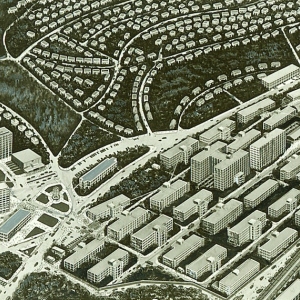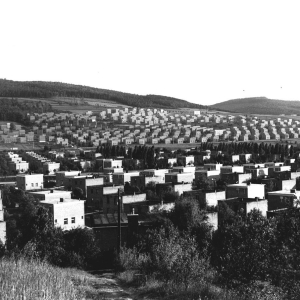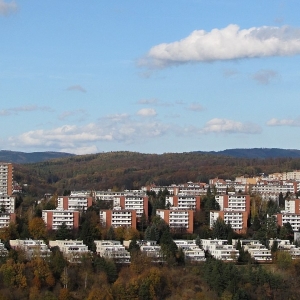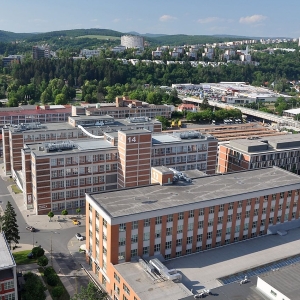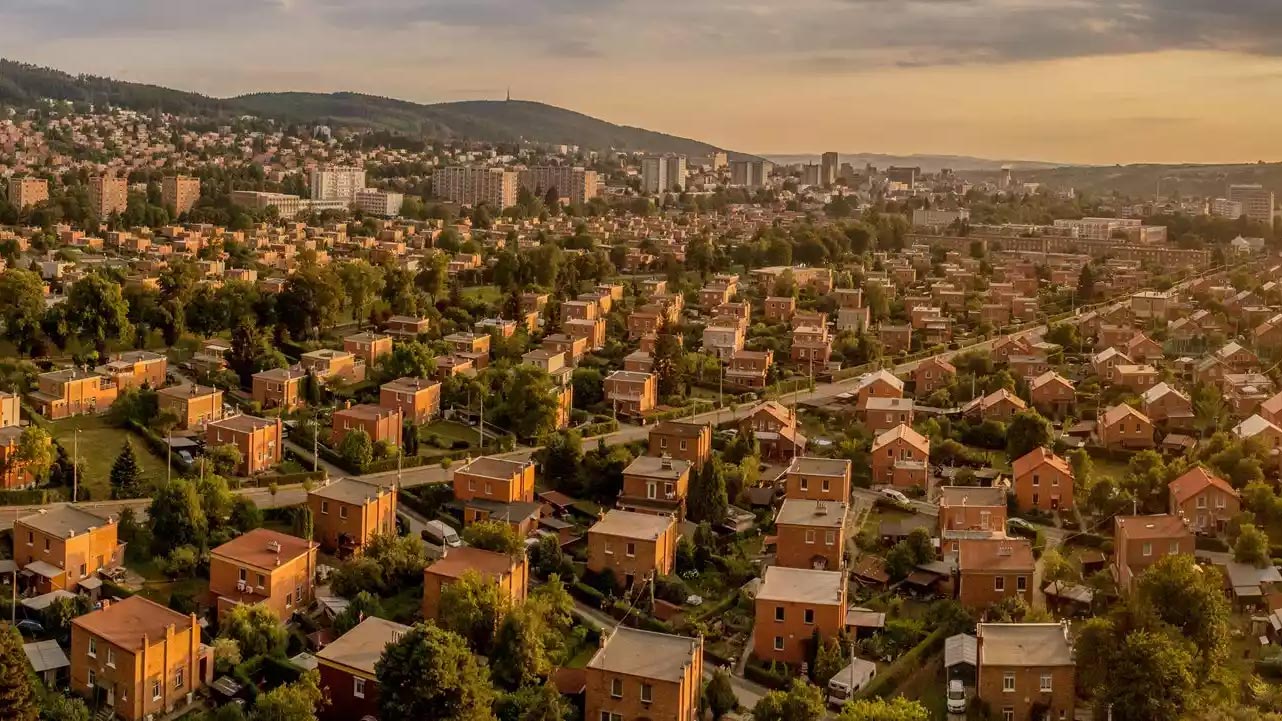
Zlín
Zlín, Czech Republic
The unique Czech city of Zlín is an urban utopia that was also influenced by the garden city movement.
| Garden City Type: | Former company town |
| Country: | Czech Republic |
| City: | Zlín |
| Years of construction: |
1923 Start construction 1938 Completion
|
| Initiator/client: | Bata Company |
| Architect or related: |
Jan Kotěra Jan Kotěra (18 December 1871 – 17 April 1923) was a Czech architect, artist and interior designer. Having seen garden cities during his travels, he modelled his extension plan for Zlín after the garden cities he had encountered. František Gahura František Lýdie Gahura (10 October 1891 – 15 September 1958) was a Czechoslovak architect |
| Heritage status: | Yes |
| Explanation: | Most of the buildings are listed. |
| General condition of Garden City: | Good condition |
General description
In 1894, Tomáš Baťa, along with his brother Antonín and sister Anna, launched the T. & A. Baťa Shoe Company in the Moravian town of Zlín, then part of the Austro-Hungarian empire. The company grew, especially during the First World War, when it supplied millions of pairs of boots to the Austro-Hungarian army. During the post-war crisis Tomáš Baťa made the decision to halve the price of shoes, thereby gaining thousands of new customers.
Plans for a workers' colony were made in the period 1915-1922. A large factory complex with dozens of modern buildings was eventually erected on the outskirts of the city. The company built department stores, a hotel, a big cinema, a large hospital, school buildings, science buildings, film studios and thousands of new apartments. The number of inhabitants rose sharply: from 4.678 in 1921, to 37.342 in 1937. Zlín was transformed into a super-modern industrial city, built according to modern urban planning concepts.
During the time Tomáš Baťa served as Zlín’s mayor, from 1923 to 1932, the number of Baťa employees in Zlín grew from 1.800 to 17.000. In addition to millions of pairs of shoes, Baťa also produced machines, rubber, chemical, textile products, etc. here. In Czechoslovakia and in many European countries, the network of Bata shoe stores grew.
After the death of Tomáš Baťa in 1932, the company kept on growing, both domestically and internationally. The German occupation of Czechoslovakia and the Second World War however halted the boom of Baťa's
Architecture / Urban planning
Baťa wanted housing surrounded by nature and gardens for his married staff. Zlín was like many new towns developed by humanist industrialists: its development was to make the employees happier and healthier workers. (He apparently also forbade the planting of any vegetables in the garden plots to ensure that his workers were resting while at home.)
Zlín in a way was the child of two urban utopian visions: Ebenezer Howard's Garden City Movement, and Le Corbusier's French vision of urban modernity. There were separate factory zones, residential areas, public building zones, and areas of open space. The Letná neighbourhood was connected to the factory complex and a greenbelt surrounded the entire development. Bata was making the new housing blocks generous and surrounded by gardens. Wages were also generous, and in the 1930s the working week was shorter than in UK industries. There was welfare support and education was encouraged.
Zlin’s model for modern architecture was a 6,15 m ferro-concrete cube, infilled with steel, red bricks, reinforced concrete and glass. This simple model was used by Bata's architects Frantisek Gahura and Vladimír Karfik for all industrial buildings, shops, schools, hospitals, hotel and hostels for unmarried workers. The features of most dominant buildings in the city, the large factories and office buildings, are typically made from unplastered red brickwork on a reinforced concrete skeleton, with flat roofs and steel window frames.
Sources
- Website URL
- Website URL
Atlas Obsura: How the Czech City Built on Shoes Reclaimed Its Past
- Website URL

